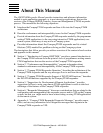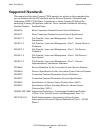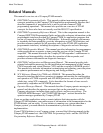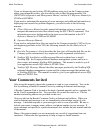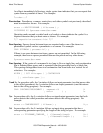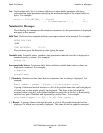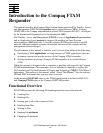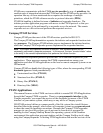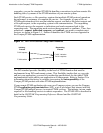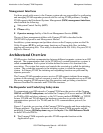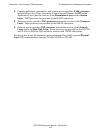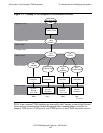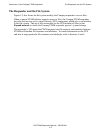About This Manual
OSI/FTAM Responder Manual—425199-001
xiv
Notation for Management Programming Interfaces
either vertically, with aligned braces on each side of the list, or horizontally, enclosed in
a pair of braces and separated by vertical lines. For example:
obj-type obj-name state changed to state, caused by
{ Object | Operator | Service }
process-name State changed from old-objstate to objstate
{ Operator Request. }
{ Unknown. }
| Vertical Line. A vertical line separates alternatives in a horizontal list that is enclosed in
brackets or braces. For example:
Transfer status: { OK | Failed }
% Percent Sign. A percent sign precedes a number that is not in decimal notation. The
%þnotation precedes an octal number. The %Bþnotation precedes a binary number.
The %Hþnotation precedes a hexadecimal number. For example:
%005400
P=%p-register E=%e-register
Notation for Management Programming Interfaces
The following list summarizes the notation conventions used in the boxed descriptions
of programmatic commands, event messages, and error lists in this manual.
UPPERCASE LETTERS. Uppercase letters indicate names from definition files; enter these
names exactly as shown. For example:
ZCOM-TKN-SUBJ-SERV
lowercase letters. Words in lowercase letters are words that are part of the notation,
including Data Definition Language (DDL) keywords. For example:
token-type
!r. The !r notation following a token or field name indicates that the token or field is
required. For example:
ZCOM-TKN-OBJNAME token-type ZSPI-TYP-STRING. !r
!o. The !o notation following a token or field name indicates that the token or field is
optional. For example:
ZSPI-TKN-MANAGER token-type ZSPI-TYP-FNAME32. !o




